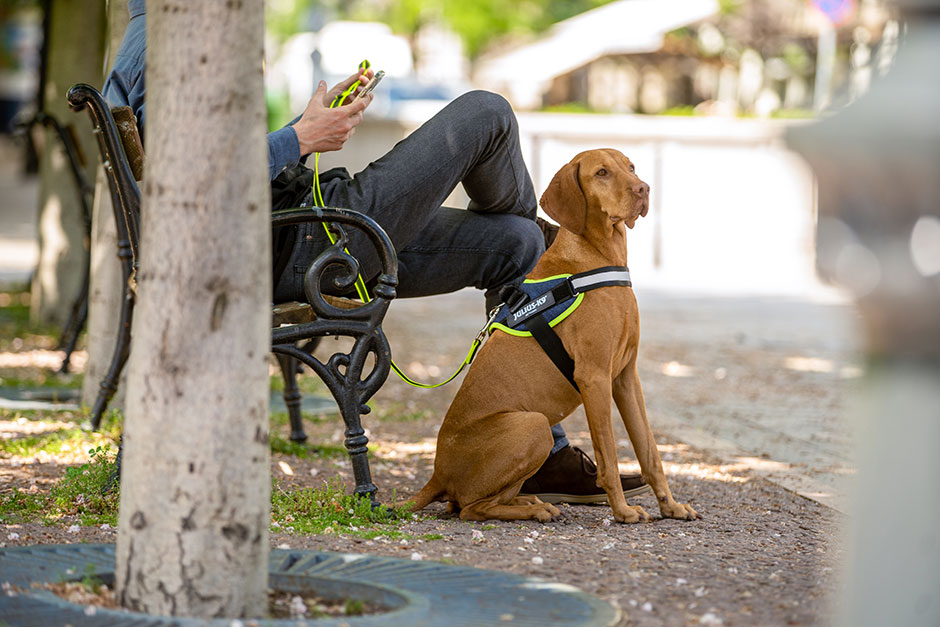Every dog person has it hanging somewhere in their home, in many cases not only one, but several in different colours and sizes: the leash. The tool that connects us with our dogs – as you use it, your personality and relationship with your dog is revealed.
The leash is an essential accessory for city walks. It is important to use a leash that is made of a durable material as it is often used several times a day. Its ideal length depends on the size of the dog: in an urban environment, a 1-1.2-metre version is optimal for a large dog, while a 1.5 metre length may be more practical in the case of a small dog. That should be safe enough in a bustling urban environment where it is important that dogs don’t move too far away from their owners and don’t bother other people on the street.
In addition to the length of the leash, the width and size of the carabiner should also be taken into consideration. For a small dog, a 14-millimeter-wide leash with a smaller carabiner is appropriate as it’s not too heavy for the dog. In contrast, for a medium-large sized dog, it’s recommended to use a 20mm wide leash with a stronger carabiner. Take a look at our leash offer and choose the one that suits you best!
Before you set off for a walk, always make sure that the leash is intact. When attaching the carabiner to the harness or collar, also make sure you attach it to the right place.
Hold the leash with both hands if possible, especially if, for example, you are passing a busy road or walking through a crowd. If your dog is walking on your left side, the looped end of the leash should be in your right hand, and hold it a little lower with your left hand as well to ensure a secure grip. If the leash is the right length, it should loosely hang between the two of you.

Correct leash handling is especially important if your pet is scared of something and trying to wriggle out of the harness. In this case, never tighten the leash and do not stand facing the dog. If your pet is often insecure or scared, it’s a good idea to attach the leash to both the harness and collar at the same time. The double carabiner leash, which is also available in our offer, is ideal for this purpose.
If you come across another dog while walking on a leash, never let your dog approach it without asking the other owner if it’s alright. The other dog may not feel like having company, or might have poor eyesight, and could therefore be sensitive to being approached. There could be several other reasons why the owner wouldn’t want them to get too close to each other. Therefore, in this case, try to pass each other with the dogs on the opposite sides. (Feel free to take a reward snack or toy to make it easier to get your dog’s attention.)
IMPORTANT: Never leave your dog on a leash unattended! It can get tangled, or possibly damage the leash out of boredom by chewing on it. As a puppy, your dog should be taught not to chew on a leash when they first start playing with it during walks. Otherwise, the dog may also be more prone to chewing on a leash left lying around. If your pet has chewed the leash and pieces are missing from it, it is advisable to consult a veterinarian immediately. To help with the medical diagnosis, take the chewed leash with you.
